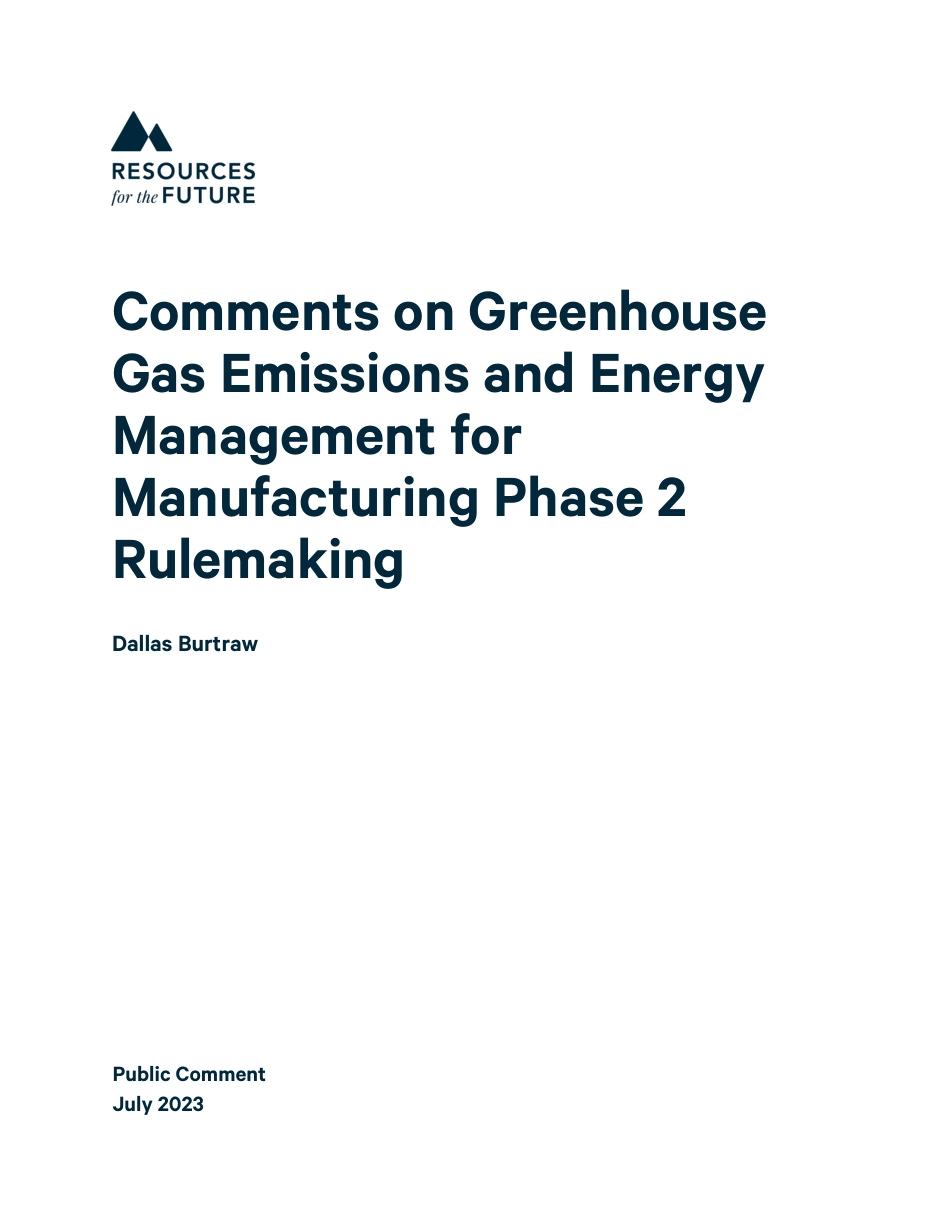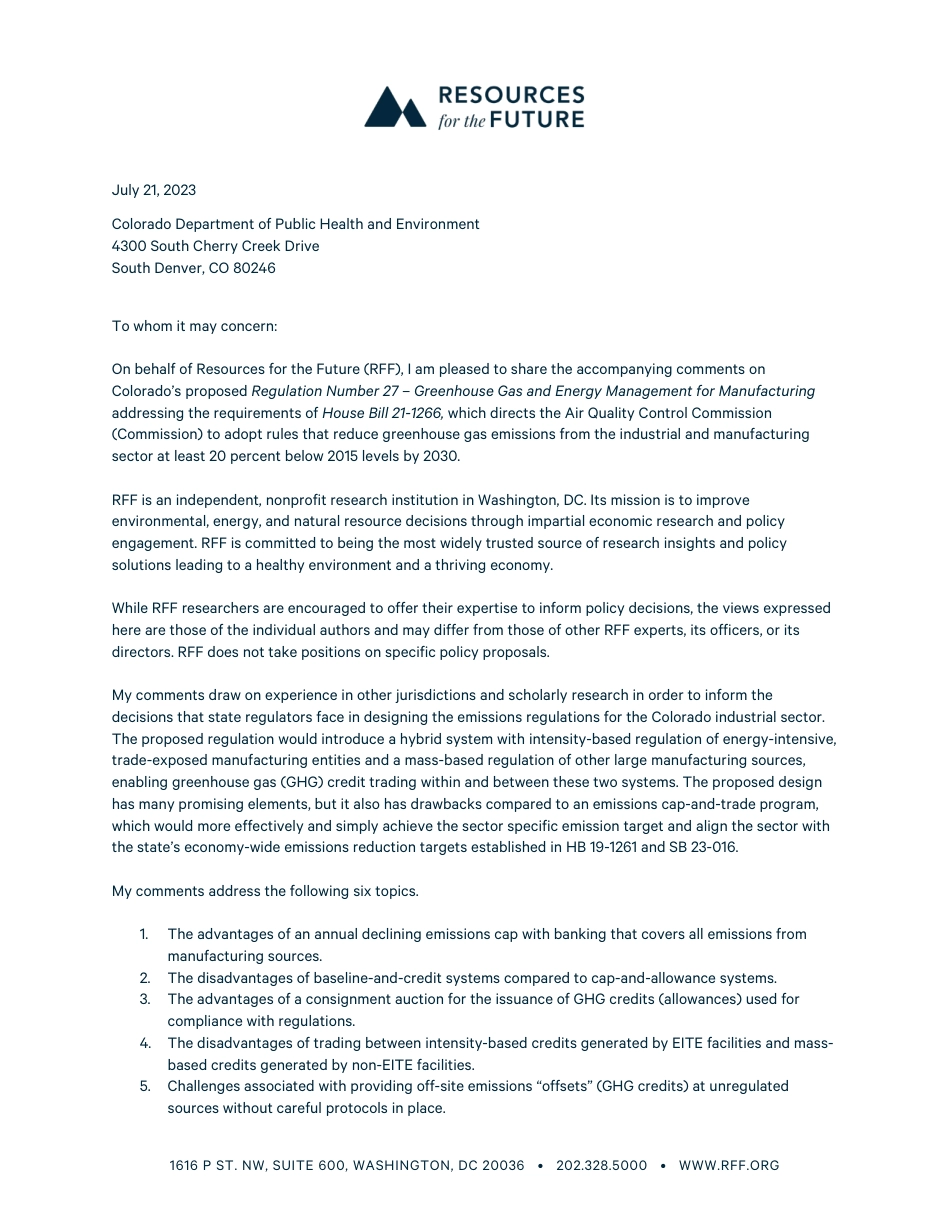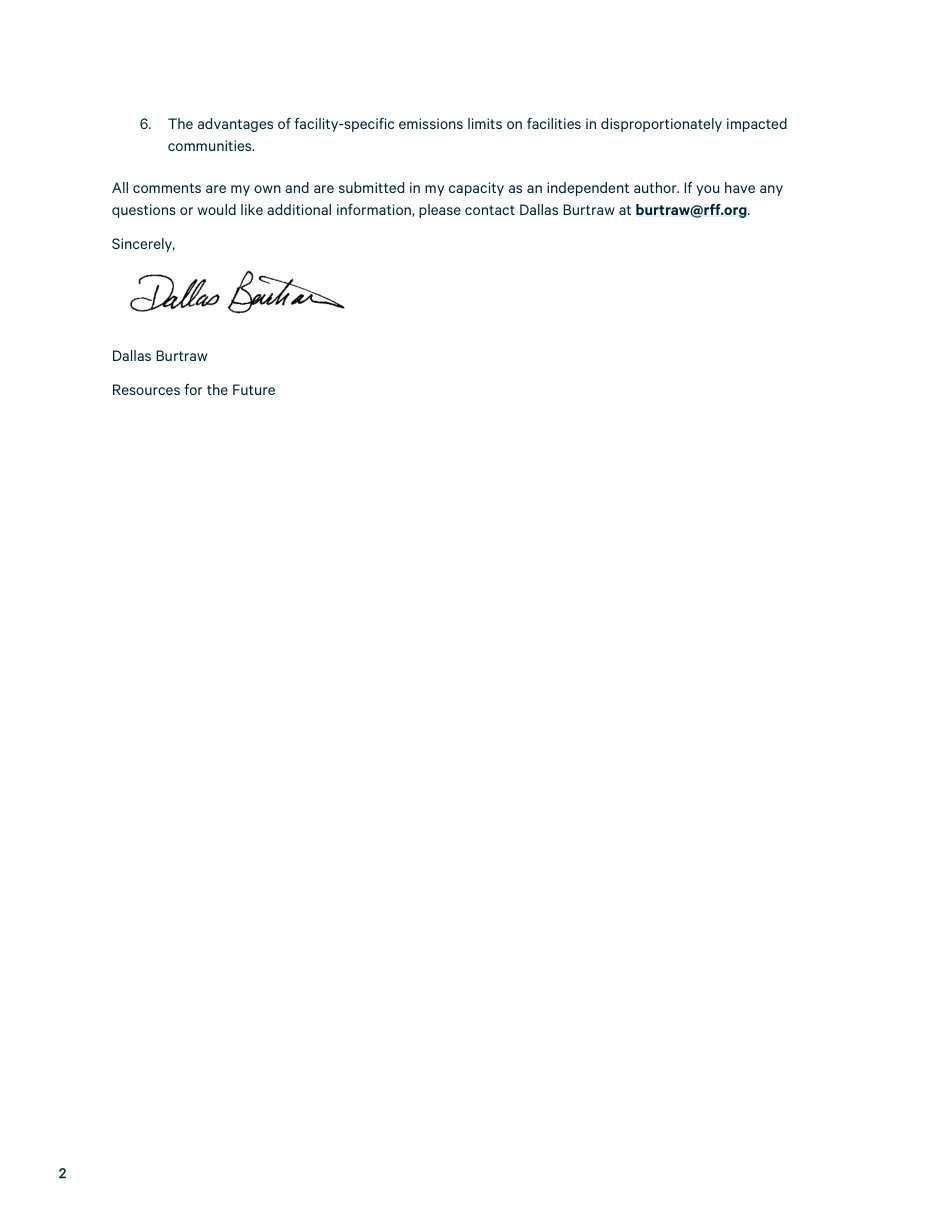Comments on Greenhouse Gas Emissions and Energy Management for Manufacturing Phase 2 Rulemaking Dallas Burtraw Public Comment July 2023 1616 P ST. NW, SUITE 600, WASHINGTON, DC 20036 • 202.328.5000 • WWW.RFF.ORG July 21, 2023 Colorado Department of Public Health and Environment 4300 South Cherry Creek Drive South Denver, CO 80246 To whom it may concern: On behalf of Resources for the Future (RFF), I am pleased to share the accompanying comments on Colorado’s proposed Regulation Number 27 – Greenhouse Gas and Energy Management for Manufacturing addressing the requirements of House Bill 21-1266, which directs the Air Quality Control Commission (Commission) to adopt rules that reduce greenhouse gas emissions from the industrial and manufacturing sector at least 20 percent below 2015 levels by 2030. RFF is an independent, nonprofit research institution in Washington, DC. Its mission is to improve environmental, energy, and natural resource decisions through impartial economic research and policy engagement. RFF is committed to being the most widely trusted source of research insights and policy solutions leading to a healthy environment and a thriving economy. While RFF researchers are encouraged to offer their expertise to inform policy decisions, the views expressed here are those of the individual authors and may differ from those of other RFF experts, its officers, or its directors. RFF does not take positions on specific policy proposals. My comments draw on experience in other jurisdictions and scholarly research in order to inform the decisions that state regulators face in designing the emissions regulations for the Colorado industrial sector. The proposed regulation would introduce a hybrid system...



